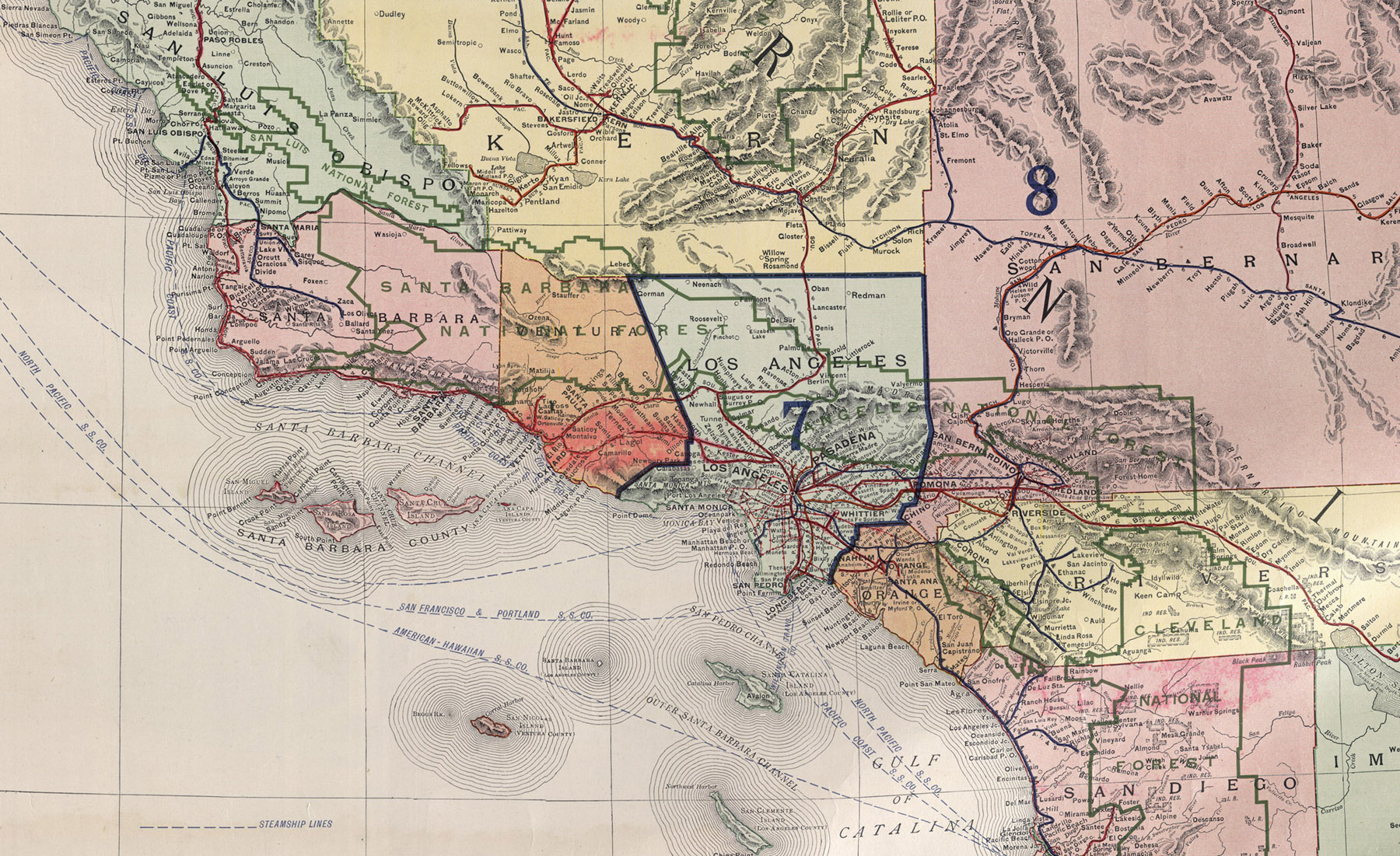
#156 Daley Ranch Preserve
Daley Ranch Preserve is a 3,000 acre park with more than 25 miles of trails in Escondido. Robert Daley settled here to build a ranch in 1869 while Kumeyaay Native Americans have lived here for thousands of years. A 1.2 mile hike along the ranch house trail takes you to the ruins of the ranch property while winding through beautiful canyons of oak woodland.
#153 Devil's Punchbowl Natural Area
Devil's Punchbowl Natural Area is a grand assortment of sandstone boulders and cliffs at the base of the San Gabriel Mountains National Monument. At 4,750 feet, the San Andreas Fault travels directly beneath the park helping to create its striking formations. A one mile trail takes you down into the heart of the punchbowl for an up-close look at this geological wonderland.
#151 Fremont Canyon Nature Preserve
Fremont Canyon is a beautiful Nature Preserve in the Santa Ana Mountains of Orange County. Stunning granite formations tower along coastal sage scrub, chaparral and oak woodlands. Many endangered plant and animal species reside here making it a biological hot spot. *Access is limited to programs by the Irvine Ranch Conservancy.
#118 Chumash Painted Cave
Chumash Painted Cave State Historic Park outside of Santa Barbara protects a sandstone cave adorned with Native American rock art. These Pictographs are thought to depict the universe as seen through the eyes of the Native Chumash. The Chumash lived on the Central Coast from Ventura County to San Luis Obispo County as well as the Channel Islands for thousands and thousands of years. Painted Cave provides an important glimpse into the past of Native Americans.
#83 Oak of the Golden Dream
The Oak of the Golden Dream is the first original discovery of Gold in today's Placerita Canyon State Park. Six years before the California Gold Rush, a man named Francisco Lopez, brother of nearby Mission San Fernando Rey de España, had a dream of Gold while napping under an oak tree. After the dream, he picked wild onions and discovered gold in its roots. It became the first documented gold site in California. Marking the famous March 9th 1842 discovery is the surviving tree and the California Historical Landmark No. 168 Plaque.
#80 Painted Rock
Painted Rock in the Carrizo Plain National Monument is an amazing pictograph rock art site. Thousands of years old, these pictographs were created by the Chumash, Salinan and Yokut Natives. The pigments were created from a yucca shrub while they were painted using brushes made of rodent hair. Although the meanings are now lost, the art remains sacred. Access to the site is via a rough dirt road and limited to guided tours from March to May and is a 1.4 mile hike. The rest of the year you need to register online to gain access to this federally protected site.
Pictograph/Petroglpyh Etiquette: Take many photos but DO NOT TOUCH. Oils from our hands can destroy forever. Do not alter the rock art in any way or form and please stay on the trail to protect the fragile desert ecosystem.
#64 Arroyo Verde Park
Arroyo Verde Park in Ventura is a beautiful place to view the central coast. Commanding views of the Channel Islands, the Oxnard Plain, the Santa Monica Mountains and Ventura County can all be seen from the trails. The Iconic 'Two Trees', a Ventura Landmark, can also be seen as the rolling foothills turn a brilliant green in the wintertime.
#60 Wildwood Canyon State Park
Located in the foothills of the San Bernardino Mountains, Wildwood Canyon State Park preserves 900 acres of wild land. Dedicated in 2003, it is fairly new to the California State Park System which was formed in 1927. The park contains oak woodland, grassland, ancient Native American crossroads as well as the ruins of Pioneer Hunt Ranch. The ranch can be reached from the parking lot by an easy 2 mile out and back hike.
#44 Mission Santa Inés
Mission Santa Inés, established in 1804, was created to help convert the Chumash Native Americans to the Spanish way of life. Being the 19th established Mission, it served as a link between Santa Barbara and Lompoc. The Chumash revolted this new way of life in February of 1824. They fought for their freedom which eventually led to them fleeing into the mountains. The Mission system ended in 1833 after Mexico won independence from Spain in 1821. Today, Mission Santa Inés has been beautifully restored against the rolling green backdrop of the Santa Ynez Valley in Solvang.
#39 Mormon Rocks
Mormon Rocks also named Rock Candy Mountains are a series of sandstone boulders located in the foothills of the San Gabriel Mountains. These giant rock formations lie directly in the San Andreas Fault Zone. Part of San Bernardino National Forest, these rocks were named for the settlers moving from Salt Lake City, Utah to Los Angeles in covered wagons in the 1800's. These beautiful formations are along historic Route 66 in today's Cajon Pass.
























